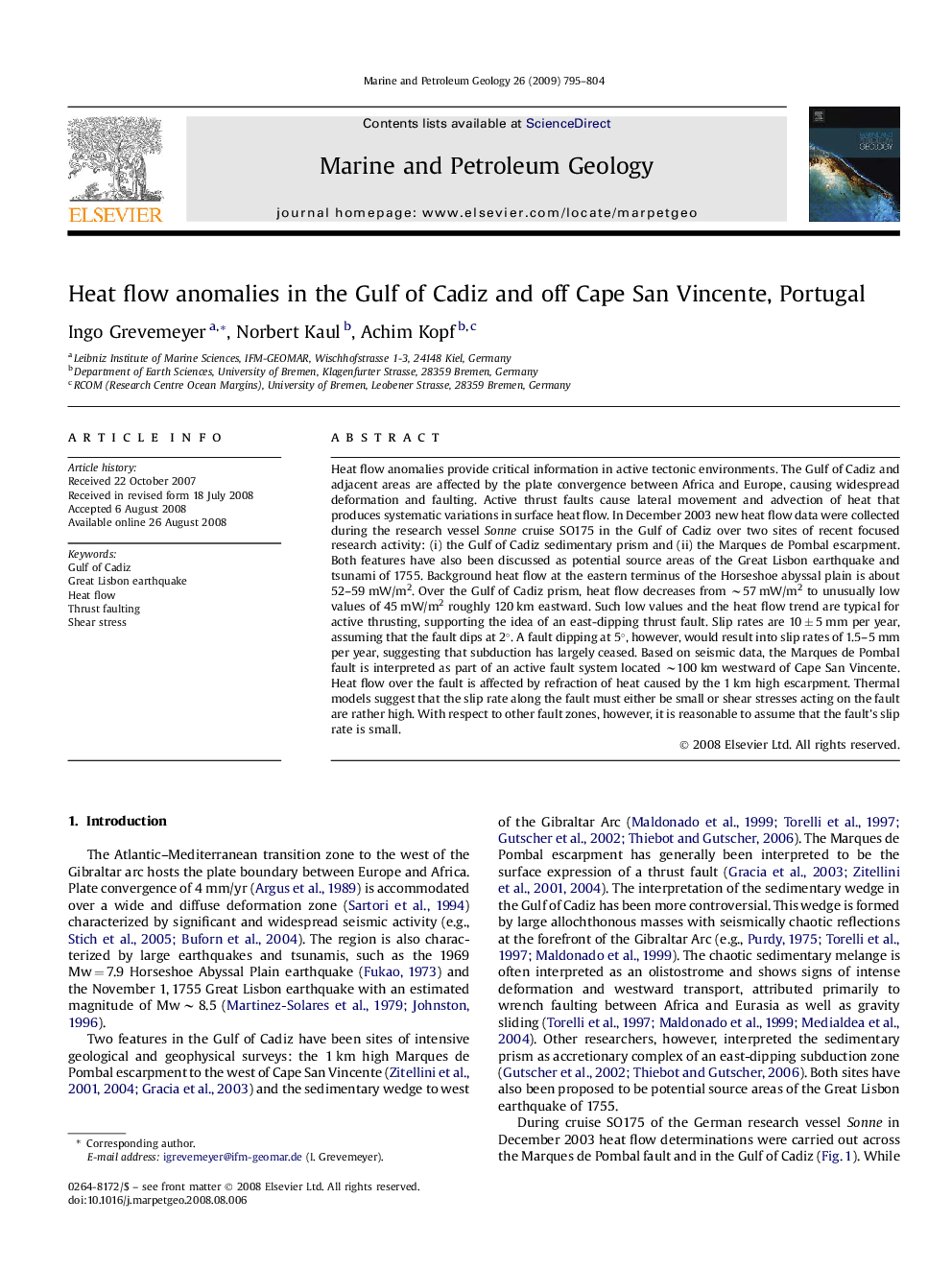| کد مقاله | کد نشریه | سال انتشار | مقاله انگلیسی | نسخه تمام متن |
|---|---|---|---|---|
| 4696612 | 1351692 | 2009 | 10 صفحه PDF | دانلود رایگان |

Heat flow anomalies provide critical information in active tectonic environments. The Gulf of Cadiz and adjacent areas are affected by the plate convergence between Africa and Europe, causing widespread deformation and faulting. Active thrust faults cause lateral movement and advection of heat that produces systematic variations in surface heat flow. In December 2003 new heat flow data were collected during the research vessel Sonne cruise SO175 in the Gulf of Cadiz over two sites of recent focused research activity: (i) the Gulf of Cadiz sedimentary prism and (ii) the Marques de Pombal escarpment. Both features have also been discussed as potential source areas of the Great Lisbon earthquake and tsunami of 1755. Background heat flow at the eastern terminus of the Horseshoe abyssal plain is about 52–59 mW/m2. Over the Gulf of Cadiz prism, heat flow decreases from ∼57 mW/m2 to unusually low values of 45 mW/m2 roughly 120 km eastward. Such low values and the heat flow trend are typical for active thrusting, supporting the idea of an east-dipping thrust fault. Slip rates are 10 ± 5 mm per year, assuming that the fault dips at 2°. A fault dipping at 5°, however, would result into slip rates of 1.5–5 mm per year, suggesting that subduction has largely ceased. Based on seismic data, the Marques de Pombal fault is interpreted as part of an active fault system located ∼100 km westward of Cape San Vincente. Heat flow over the fault is affected by refraction of heat caused by the 1 km high escarpment. Thermal models suggest that the slip rate along the fault must either be small or shear stresses acting on the fault are rather high. With respect to other fault zones, however, it is reasonable to assume that the fault's slip rate is small.
Journal: Marine and Petroleum Geology - Volume 26, Issue 6, June 2009, Pages 795–804